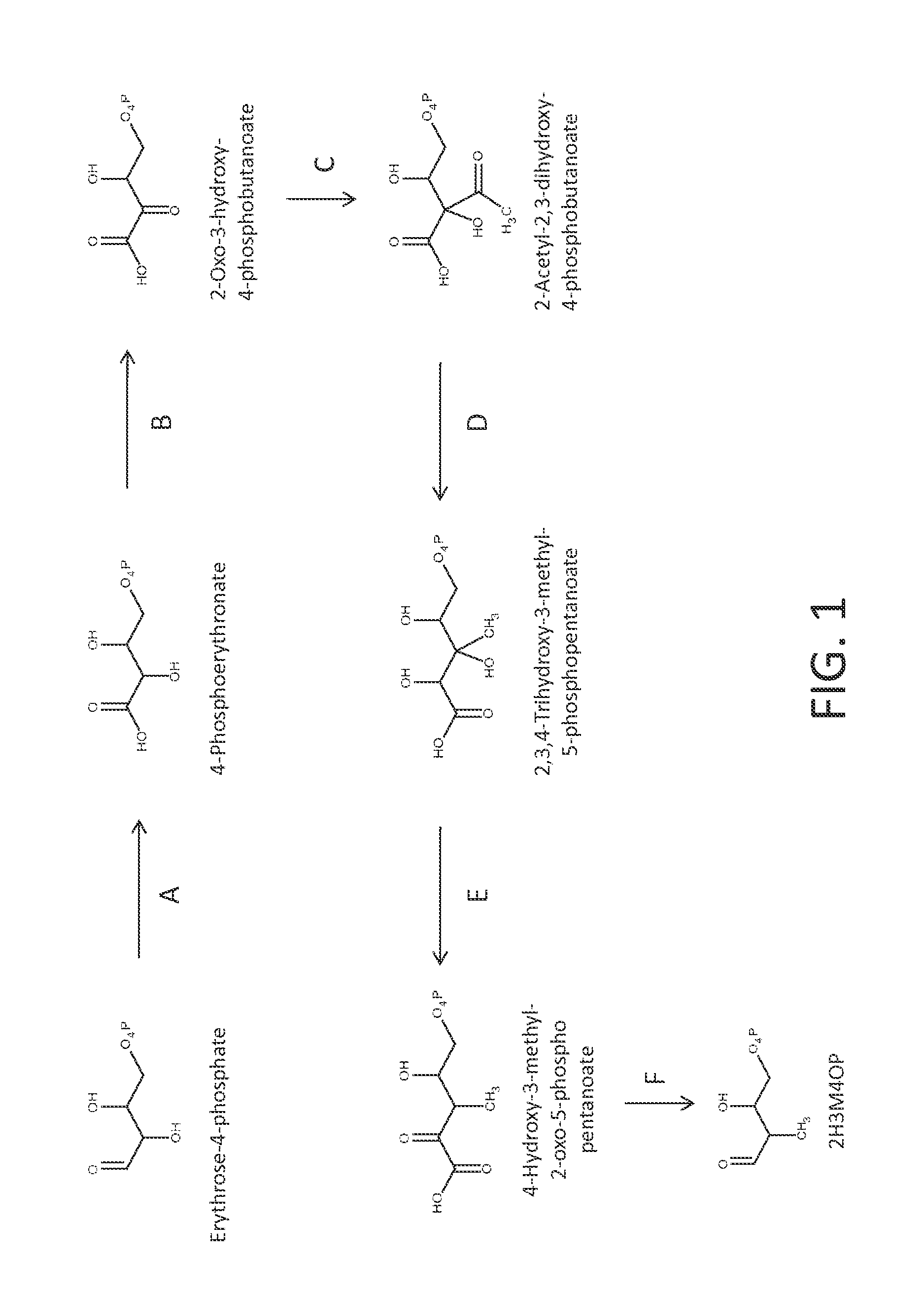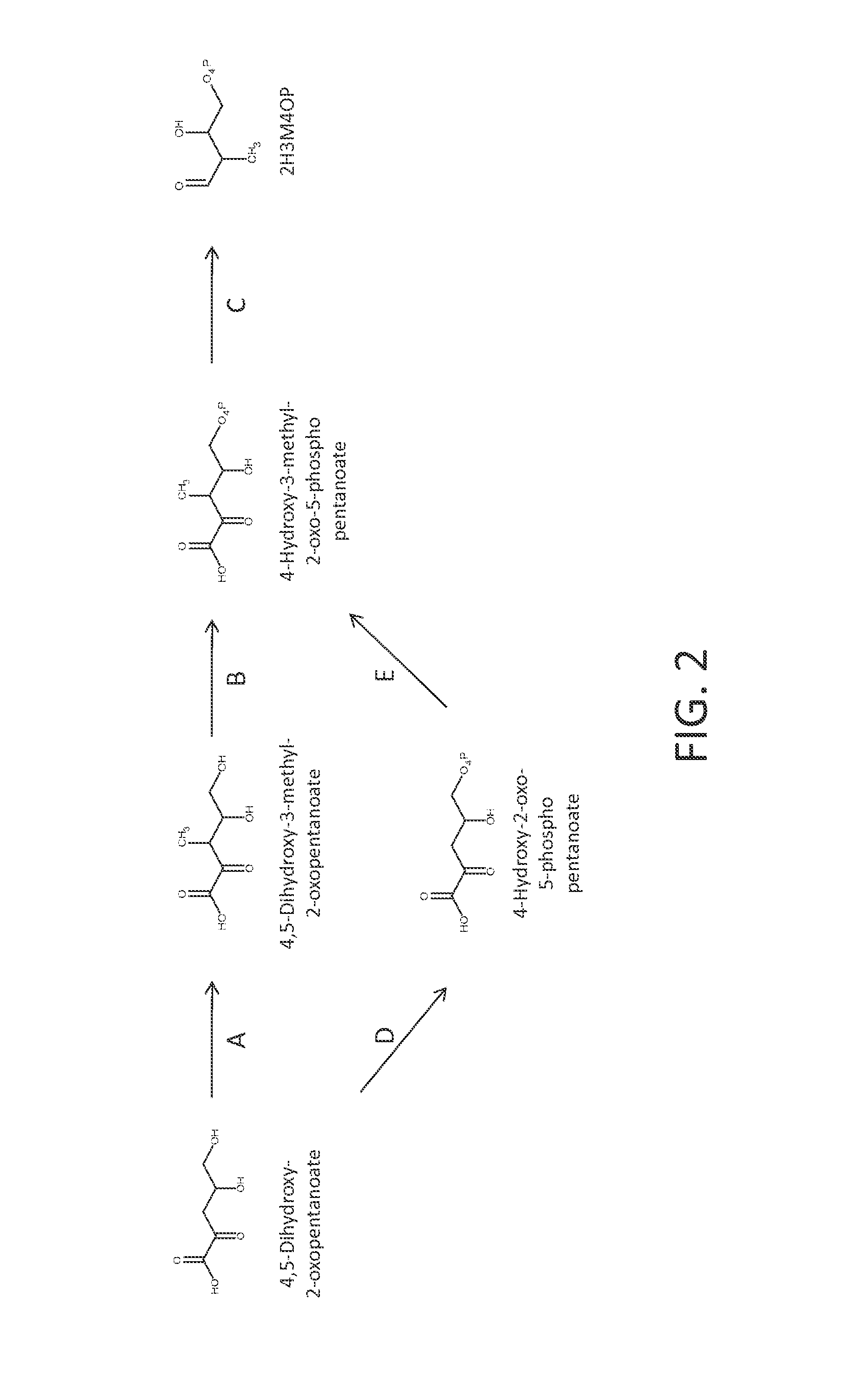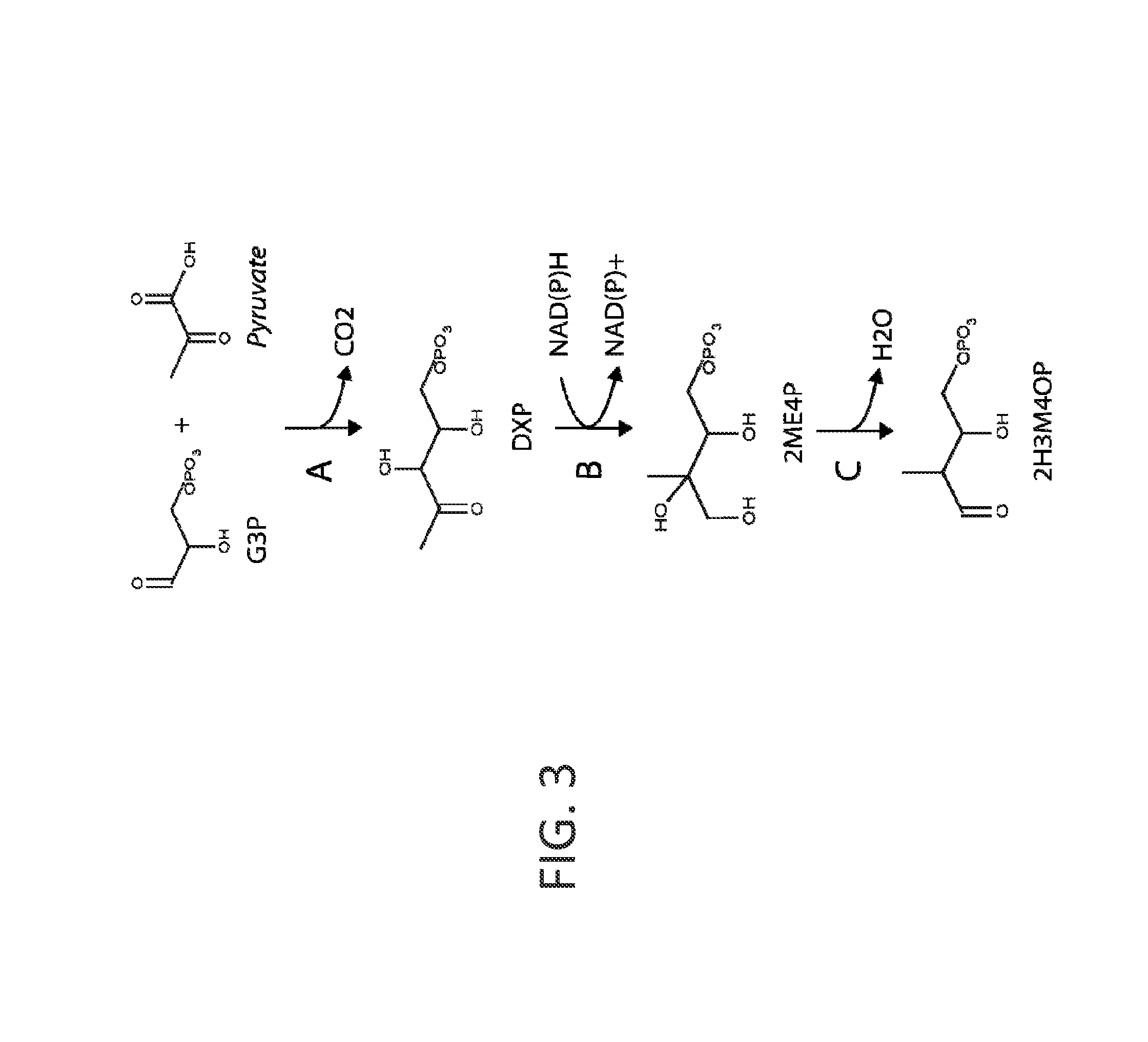Microorganisms and processes for producing terephthalic acid and its salts
a technology of terephthalic acid and microorganisms, which is applied in the direction of enzymology, group 5/15 element organic compounds, lyases, etc., can solve the problems of cost-effective methods for generating renewable pta that have not yet been developed, and the biosynthetic pathway for pta is severely limited by the properties of known enzymes, so as to reduce the ph of the culture medium
- Summary
- Abstract
- Description
- Claims
- Application Information
AI Technical Summary
Benefits of technology
Problems solved by technology
Method used
Image
Examples
example i
Exemplary Pathways for Producing 2H3M4OP
[0250]This example describes an exemplary pathway for producing the terephthalic acid (PTA) precursor 2H3M4OP.
[0251]The precursor to the p-toluate and PTA pathways is 2H3M4OP. FIG. 1 shows a pathway from erythrose-4-phosphate to 2H3M4OP. The first two steps of the pathway employ enzymes of P5C biosynthesis. In the first step, oxidation of erythrose-4-phosphate to 4-phosphoerythronate is catalyzed by erythrose-4-phosphate dehydrogenase (EC 1.2.1.72). In step B, 4-phosphoerythronate is further oxidized to 2-oxo-3-hydroxy-4-phosphobutanoate by 4-phosphoerythronate dehydrogenase (EC 1.1.1.290). The next three steps of the pathway are analogous to the isoleucine biosynthesis pathway comprising a synthase, a ketol-acid reductoisomerase and a diol dehydratase. In step C, a 2-acetyl-2,3-dihydroxy-4-phosphobutanoate synthase converts pyruvate and 2-oxo-3-hydroxy-4-phosphobutanoate to 2-acetyl-2,3-dihydroxy-4-phosphobutanoate, releasing CO2. This interm...
example ii
Exemplary Pathway for Producing 2H3M4OP from Glyceraldehyde-3-phosphate (G3P) and Pyruvate
[0271]This example describes an exemplary pathway for producing the terephthalic acid (PTA) precursor 2H3M4OP.
[0272]The precursor to the p-toluate and PTA pathways is 2H3M4OP. This chemical can be derived from central metabolites glyceraldehyde-3-phosphate (G3P) and pyruvate in three enzymatic steps as shown in FIG. 3. The first two steps are native to E. coli and other organisms that utilize the methylerythritol phosphate (non-mevalonate) pathway for isoprenoid biosynthesis. Pyruvate and G3P are first condensed to form 1-deoxy-D-xylulose 5-phosphate (DXP) by DXP synthase. Subsequent reduction and rearrangement of the carbon backbone is catalyzed by DXP reductoisomerase. Finally, a novel diol dehydratase transforms 2-C-methyl-D-erythritol-4-phosphate to the p-toluate precursor 2H3M4OP.
A. 1-Deoxyxylulose-5-phosphate (DXP) synthase
[0273]Pyruvate and G3P are condensed to form DXP by DXP synthase (...
example iii
Exemplary Pathway for Synthesis of p-Toluate from 2H3M4OP by Shikimate Pathway Enzymes
[0283]This example describes exemplary pathways for synthesis of p-toluate using shikimate pathway enzymes.
[0284]The chemical structure of p-toluate closely resembles p-hydroxybenzoate, a precursor of the electron carrier ubiquinone. 4-Hydroxybenzoate is synthesized from central metabolic precursors by enzymes in the shikimate pathway, found in bacteria, plants and fungi. The shikimate pathway is comprised of seven enzymatic steps that transform D-erythrose-4-phosphate (E4P) and phosphoenolpyruvate (PEP) to chorismate. Pathway enzymes include 2-dehydro-3-deoxyphosphoheptonate (DAHP) synthase, dehydroquinate (DHQ) synthase, DHQ dehydratase, shikimate dehydrogenase, shikimate kinase, 5-enolpyruvylshikimate-3-phosphate (EPSP) synthase and chorismate synthase. In the first step of the pathway, D-erythrose-4-phosphate and phosphoenolpyruvate are joined by DAHP synthase to form 3-deoxy-D-arabino-heptulos...
PUM
| Property | Measurement | Unit |
|---|---|---|
| melting point | aaaaa | aaaaa |
| temperatures | aaaaa | aaaaa |
| time | aaaaa | aaaaa |
Abstract
Description
Claims
Application Information
 Login to View More
Login to View More - R&D
- Intellectual Property
- Life Sciences
- Materials
- Tech Scout
- Unparalleled Data Quality
- Higher Quality Content
- 60% Fewer Hallucinations
Browse by: Latest US Patents, China's latest patents, Technical Efficacy Thesaurus, Application Domain, Technology Topic, Popular Technical Reports.
© 2025 PatSnap. All rights reserved.Legal|Privacy policy|Modern Slavery Act Transparency Statement|Sitemap|About US| Contact US: help@patsnap.com



